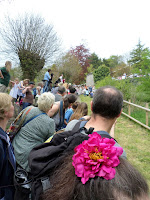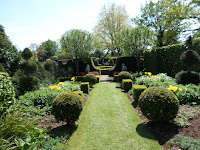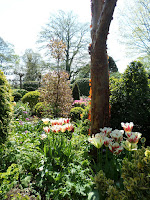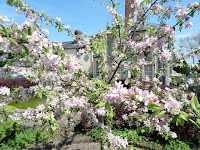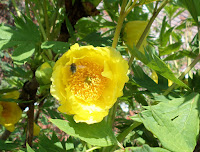Yep that time
of year again, Sis’s birthday, so up stix n off for a short break to Puerto del
Carmen Lanzarote.
Situated just
79 miles off the coast of Africa, Lanzarote is the most easterly of the Canary
Islands. The island is 37 miles (60km) long and 12 miles (20 km) wide, making
it the fourth largest island in the Canaries. As with the other Canary Islands,
Lanzarote is Volcanic in origin. Due to the recent eruptions during the 18th
and 19th Centuries, many parts of Lanzarote appear to be from another world,
often described as 'lunar'. The dry climate and lack of erosion means that the
Volcanic Landscape appears much as it did just after the eruptions. Much of the
Island has been declared a UNESCO Biosphere Reserve.
Puerto del
Carmen was originally a small fishing village, and the old harbour is still a
delightful place. Although the resort has grown over the last twenty years — it
now stretches along the whole 6 kilometres of golden sandy beaches — the town
has been saved from the high-rise buildings that blight so many other
destinations due to the strict planning restrictions.

We stayed in
a delightful, small but perfectly formed, poolside complex, Apartmentos
Flamingo – complete with palm trees n parquet’s. There are many restaurants nearby but special mention for Capri does veggie dishes to die for (and meat/fish as well).
A visit to Timanfaya
National Park is a must, set on the most easterly Canary Island, Lanzarote. It can be
found to the west of the island, nearby the town of Yaiza. Timanfaya is also
known as the fire mountains and has it's own logo which is El Diablo,
translated as the devil for obvious reasons.
The fire mountains were created
between 1730 and 1736. Over 100 volcanoes rose in the area and devastated the
island. The last eruption occurred in 1827. Temperatures
just feet below the surface still range from 400°C to 600°C. Inside there was a huge hole in the middle with a huge grill over the top, a volcanic barbecue. Next
to it is the El Diablo restaurant which serves up canarian
food that has been cooked over the volcanic heat!
 |
| when lichen is dropped into a fissure |
 |
| it bursts into flames |
 |
| water instantly turns |
 |
| to pressurised steam |
 |
pebbles from surface hot spots
are too hot to handle |
 |
the restaurant BBQ cooks
over free heat |
Along the way
there are camel rides. Rather than sit on the camels back, the camel has a seat
either side of its humps. The camels will take you up a volcano and back down
again.
There is also a museum of farming with camels -

In spite of the dry and arid conditions there is much colour to be had on the island -
and beaches
and vineyards. Vines grow individually, behind windbreaks made from lava rock, in indents made in the lava ash. This protects them from the wind, helps keep in moisture and adds to the flavour of the wine -


 |
| Cheers! |
 Welcome to Winchcombe, a Saxon town.
Welcome to Winchcombe, a Saxon town. 














